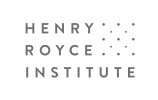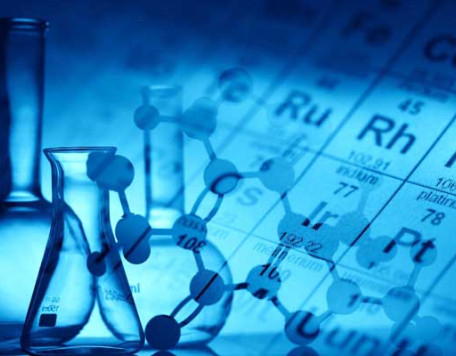© Pint of Science, 2025. All rights reserved.
We are constantly surrounded by a wealth of materials in our environment, but the magic of materials goes so far beyond the wood of our bars and the glass in our pint glasses. In this evening, we explore how materials can be used to create solar cells, develop artificial photosynthesis and inspire new ways to generate energy.
So, come with us as we 'weave' through the wonders of materials and 'forge' a new understanding of the place they may have in our future.
Kindly sponsored by the Henry Royce Institute.
So, come with us as we 'weave' through the wonders of materials and 'forge' a new understanding of the place they may have in our future.
Kindly sponsored by the Henry Royce Institute.
Can life inspire energy technologies with Royce Cambridge
Professor Ewa Marek
(Associate Professor from Department of Engineering at the University of Cambridge)
Royce Cambridge is the centrepiece for industrial engagement with the scientists and engineers working across the materials sciences on the West Cambridge Science and Technology Campus. Royce supports research and innovation through a network of open access deposition, fabrication and characterisation facilities.
One of the biggest leaps of humanity, enabled by the Industrial Revolution, is the centralised use of energy technologies and the resulting convenience and ubiquitous use of electricity. Man-made power generation reaches efficiencies of 50-60% in commercially available technologies, dwarfing the 3-6% of photosynthesis - the nature-evolved solution. The costs, though, are large - power generation is one of the most polluting and nature-exploiting sectors humanity has created. So the question for us is, can we still learn from nature to make power generation and energy technologies sustainable?
One of the biggest leaps of humanity, enabled by the Industrial Revolution, is the centralised use of energy technologies and the resulting convenience and ubiquitous use of electricity. Man-made power generation reaches efficiencies of 50-60% in commercially available technologies, dwarfing the 3-6% of photosynthesis - the nature-evolved solution. The costs, though, are large - power generation is one of the most polluting and nature-exploiting sectors humanity has created. So the question for us is, can we still learn from nature to make power generation and energy technologies sustainable?
Solar cells for space
Jiayi Li
(PhD student in Semiconductor Physics)
Without the protection of our atmosphere and magnetosphere, solar cells on satellites and space exploration payloads are exposed to space radiation like high energy particles, which will degrade their power generation performance. Radiation tolerant solar cells made of ultra-thin III-V materials are desired for extended missions in highly damaging environments, along with their advantages of high specific power, weight/cost reduction and flexible form factors.
Artificial photosynthesis: a sustainable society powered by sunlight
Tessel Bouwens
(NWO Rubicon Postdoctoral Fellow in the Reisner Lab at the University of Cambridge)
To limit the future global warming to 1.5°, we need to transition to an industry that uses abundant and non-polluting resources to provide us with energy, food and medicines without the use of fossil fuels. To design an alternative system scientist are inspired by nature, where for example, leaves on a plant use solar power to convert simple molecules into the building blocks of life. In this seminar Tessel will explain what we can learn from nature to develop artificial photosynthetic systems to achieve sustainable pathways for the production of solar fuels and pharmaceuticals.
Map data © OpenStreetMap contributors.
Other Panton Arms events
2025-05-20
Truth or Trickery?
Panton Arms
43 Panton Street, Cambridge, CB2 1HL, United Kingdom
2025-05-21
Living in a material world
Panton Arms
43 Panton Street, Cambridge, CB2 1HL, United Kingdom



